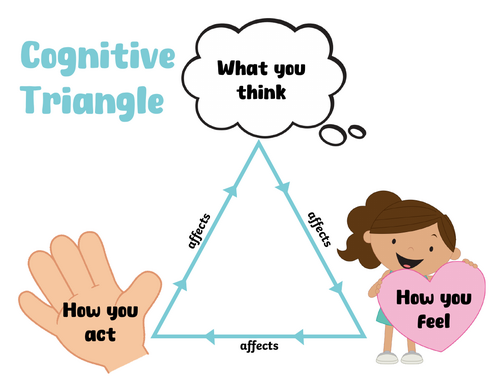

Poster reminding children that what we say, think and feel are all connected and each affects the other.
Why do you need this?
The cognitive triangle helps students understand the relationship between their thoughts, emotions, and behaviors. By visualising this connection, students can better comprehend how their thoughts can influence their feelings and actions, leading to increased self-awareness and emotional regulation.
Incorporating the cognitive triangle into classroom discussions and activities supports social-emotional learning by teaching students important skills related to self-awareness, self-management, and responsible decision-making.
How and when might you use this?
This activity could be used in a variety of ways:
· During lessons on emotions, stress management, or conflict resolution, the teacher can reference the cognitive triangle poster to facilitate discussions about how thoughts, emotions, and behaviours are interconnected.
· In counselling sessions the cognitive triangle poster can be used as a visual aid to help students understand the relationship between their thoughts, emotions, and behaviours. This can support students in developing self-awareness, self-regulation, and problem-solving skills.
· When addressing challenging behaviours in the classroom, the teacher can refer to the cognitive triangle poster to help students recognise the connection between their thoughts and actions.
· As part of a PSHE curriculum, the teacher can integrate the cognitive triangle poster into lessons focused on self-awareness, self-management, and relationship skills.
Something went wrong, please try again later.
This resource hasn't been reviewed yet
To ensure quality for our reviews, only customers who have downloaded this resource can review it
Report this resourceto let us know if it violates our terms and conditions.
Our customer service team will review your report and will be in touch.